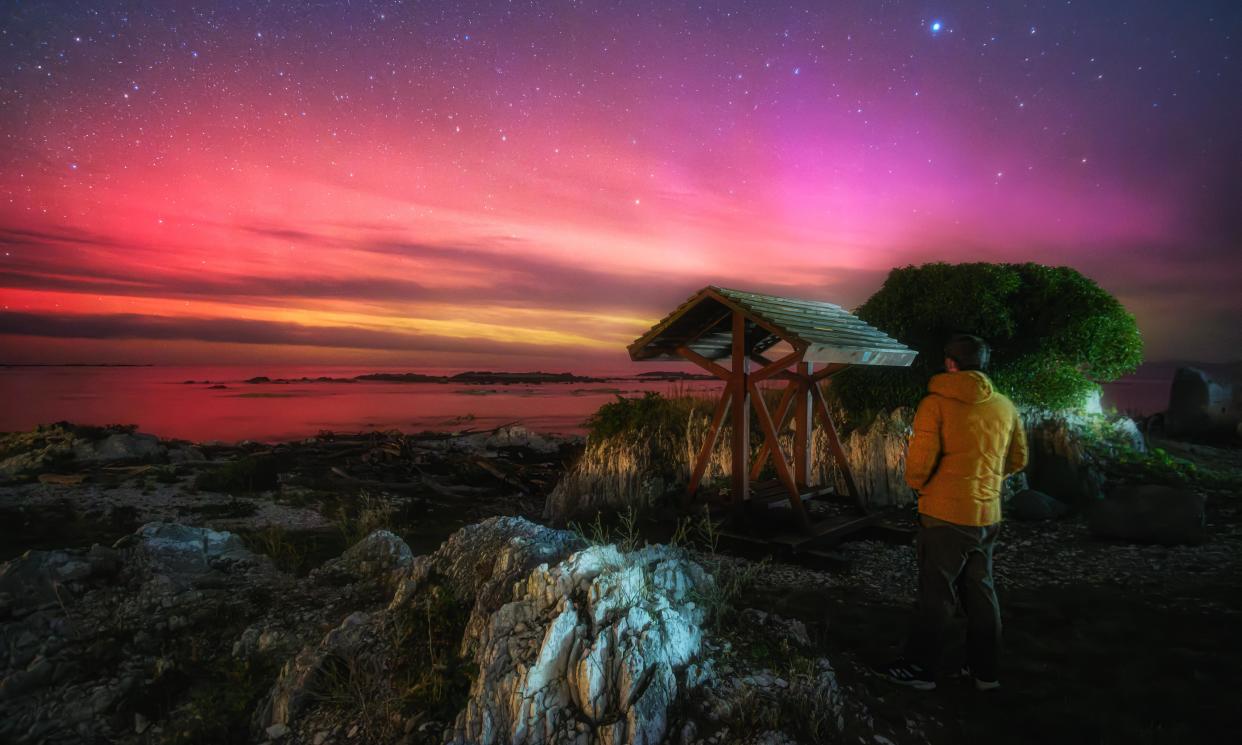‘In awe’: New Zealand aurora hunters entranced by unusually bright southern lights display

The lure of unusually vibrant views of the southern lights in New Zealand has prompted aurora-hunters to drive for hours through the night to capture the “elusive” sight on camera, with social media groups devoted to swapping tips growing in size.
The aurora australis is always more visible in New Zealand and Australian skies during autumn and winter – beginning in March in the southern hemisphere – but this month, the southern lights have been more visible than usual, analysts say. Auroras – beautiful light shows in the night sky – are seen when sunspots erupt, causing solar storms which send material from the sun towards Earth.
“Over the last few weeks we’ve seen some really, really good auroras,” says Ian Griffin, an astronomer and the director of Otago Museum.
“Around this time of year, near the equinoxes, the sun’s magnetic field and the Earth’s magnetic field line up in such a way that if there is a solar storm, the materials fall down into the Earth’s magnetic field very easily,” Griffin says.
The southern lights are usually more visible from New Zealand’s South Island, but in recent weeks, the light show has been so bright that it was visible as far north as Auckland on the North Island.
For James O’Dea, who lives in the South Island town of Culverden, aurora-chasing is “an adventure” he has pursued for the past two years, after he became part of what he called a growing community of enthusiasts.
“It becomes a bit of an addiction really, because you’re always watching out for when the next aurora might be,” O’Dea says. He and his friends use apps to alert them to potential aurora-spotting dates, and rely on weather maps to find locations with clear enough skies for photographs.
“A lot of people will travel quite far distances to get clear sky,” says O’Dea, who has driven up to two hours for the perfect shot. “I have a few friends that will travel down from the North Island, they’ll go jump on a plane just to fly out to see it.”
One of the appeals of aurora photography is the chance to see something that cannot be perceived by the human eye, he added.
“Usually you can just see it as like beams of light, so pretty much just lots of white,” says O’Dea. “You might have just got to the spot and you set the camera up, take a photo and when the screen comes up all covered in colour, it puts you in awe, really.”
Last Friday, O’Dea found spectacular views of aurora australis in Kaikōura, a coastal town north of Christchurch, which was one of the few parts of the South Island not under cloud cover, he said. The only obstacle to capturing the sight was the presence of light pollution – some of it from about 30 tourists using their mobile phones to take pictures nearby.
But with New Zealand’s population of 5 million people in an area the size of Britain, there are “many” places dark enough for spectacular auroras to be seen, says Griffin, the astronomer – particularly south of Christchurch on the South Island, at any location where there is no bright city light.
The sun’s cycle lasts about 11 years, Griffin said, so auroras will probably be more prominent in New Zealand’s night skies until a period of solar maximum, which will occur sometime before 2026 – giving aurora-hunters a couple more years to perfect their shots.

 Yahoo News
Yahoo News 
